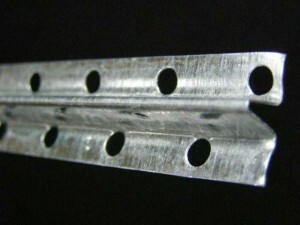Venetian plaster: 3 simple steps to create a masterpiece
Table of contents
-
1 The classic version of the wall decorations
- 1.1 Structure plaster mix
- 1.2 varieties Venetian
-
2 What do you need?
- 2.1 Expendable materials
- 2.2 Tools for wall decoration
-
3 Method plastering
- 3.1 Step 1. Rough alignment surface
- 3.2 Step 2. Application of the composition of the Venetian
- 3.3 Step 3. Decoration and protection of plastered walls
- 4 conclusion
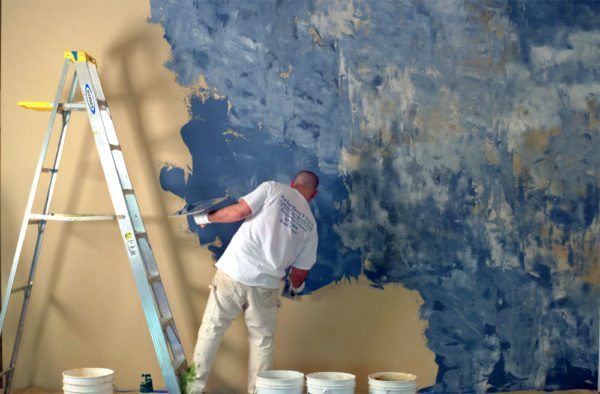
Such beauty is not easy to do, but if you try, be sure to succeed!
Venetian plaster in intererebyla and remains a key focus: this is exactly the case when the walls themselves are transformed into an element of decor. And if the idea of a radical transformation of the house or apartment you are inspired, you should take the time and understand the technology application "Venetian".
Of course, the easiest way to trim is difficult to call, but if you study the technique and some practice, you can get a good result even for a beginner. Especially in the article, I'll tell you what it needs, and will demonstrate the optimal sequence of actions.
The classic version of the wall decorations
Structure plaster mix
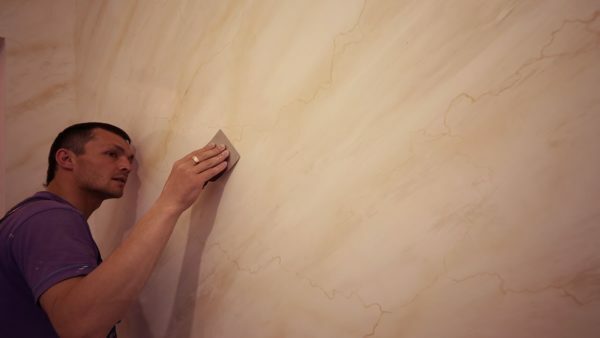
The main "trick" of the material - the application of several thin layers of overlapping
Venetian plaster - it is not so much a decorative material, as a way of its application. Surfaced coated with several thin layers of plaster mass, which are stacked in a chaotic manner.
As a result, due to a combination of smooth and textured areas formed unique topography. Further enhance the decorative effect can be colored layers of plaster in different colors, tint, polishing, waxing and other methods.
Possibility of applying thin layers of material provided by its structure. Venetian stucco typically consists of the following components:
Using natural fillers can qualitatively mimic natural minerals such as marble, granite and the like. D.
- Mineral foundation. As a filler used limestone, quartzite, marble and some other materials. To ensure the plastic mixture minerals are ground into the dust literally.
The finer the grind - the higher the quality of the plaster (and it is expensive).
- Binder. Component providing binding material on the base and adhesion of the filler particles together. For traditional varieties of decorative shtukaturkiispolzuyut slaked lime, but some manufacturers use modern and polymeric compositions, hardening in air.

Use of pigments allows different tint plaster mixture according to the planned design of the interior
- Pigments. Venetsianskuyushtukaturku to make even more beautiful in the binder added to the color components. Assortment extensive pigments from ocher and red lead to modern synthetic dyes with high resistance to UV light.
- Decorative components. The most popular types of Venetian mixture made as uniform as possible - so it is easier to form a decorative relief. But sometimes added in the glitter, colored flakes (chips), fibers and other materials, by which the surface looks more attractive.

Chatel - composition based on the marble filler with cellulose fiber
Plasters, used to decorate the room, you can either buy a ready-made or make yourself. The second warrant is only suitable for experienced craftsmen, as to pick up the proportions of components to plaster and has a strong and ductile, very hard.
varieties Venetian
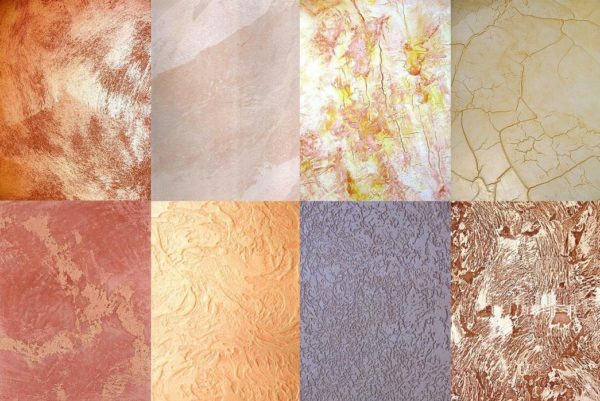
In the photo - examples of wall decoration with various compositions using different techniques of decorating
The interior works today use different kinds of Venetian plaster. Of course, it will look like finished surface depends primarily on the technology of applying the composition. Yet differences in appearance and was originally laid in the material structure.
| Illustration | species |
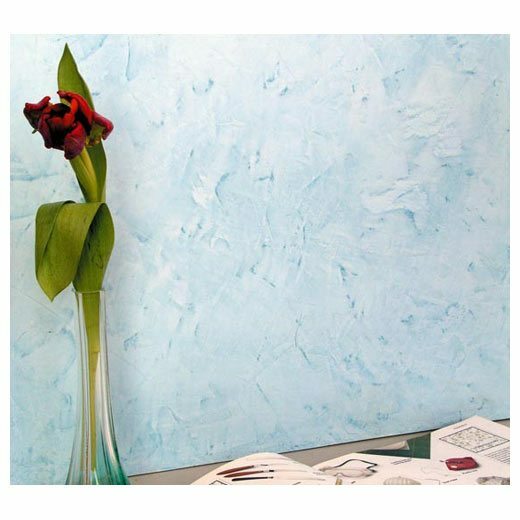 |
Veneto. The easiest and most affordable material. Easy to apply, well tolerated by external influences. Matte surface simulates polished marble. |
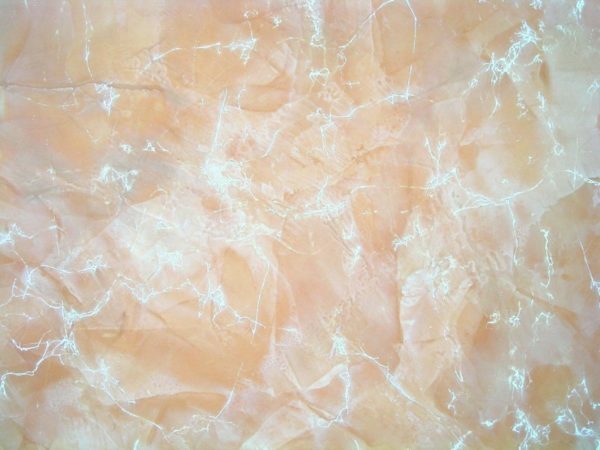 |
Trevignano. The structure imitates travertine - decorative rocks with good decorative qualities. The main advantage - a large number of colored layers, providing the effect of translucent glossy coating. |
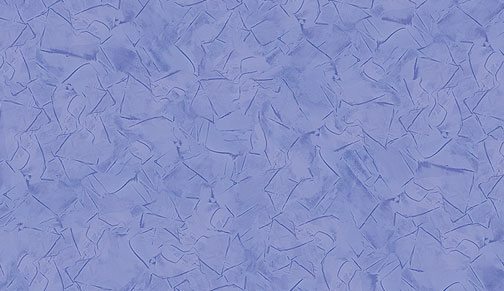 |
Marebello. Imitation marble, subjected to rough handling. It combines matt wall surface with glossy streaks. The composition has high moisture resistance, because it is usually used for decoration of bathrooms and toilets. |
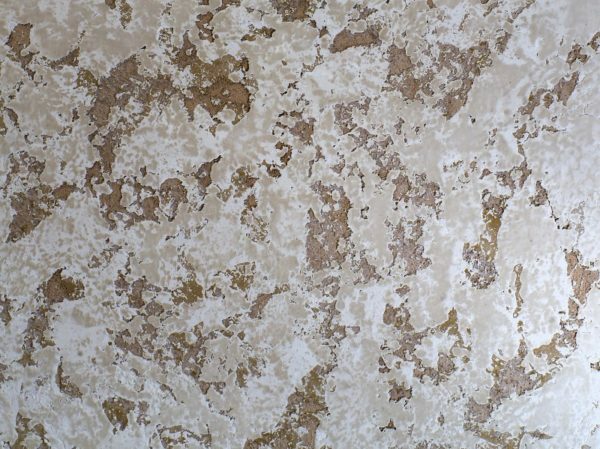 |
Enkausto. Another imitation, but this time, not marble, and granite. Matt wall surface is obtained, with splashes resembling polished granite granules. |
Of course, this list is not complete - a decorative finish can be accomplished using a variety of formulations. But at least a general idea of what to look plastered surface, it gives this description.
What do you need?
Expendable materials
Technology wall decoration with "Venetian" can be mastered independently. To do this, we will have to buy some supplies. We will use them:
- to prepare the surface for finishing;
- for plastering the walls;
- decorating already applied plaster layer.
| Illustration | materials |
 |
The primer penetrates wall. |
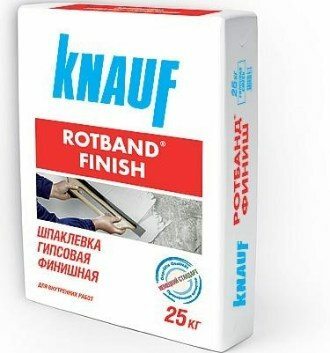 |
Formulations for alignment:
|
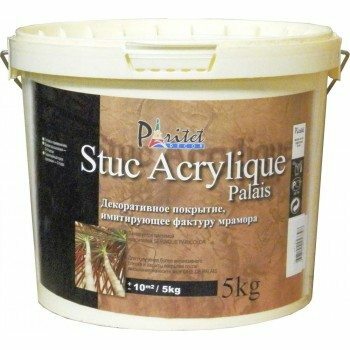 |
Venetian plaster |
| Kohler for Venetian plaster. | |
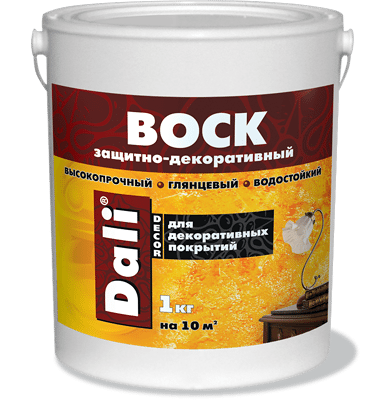 |
Decorative wax. |
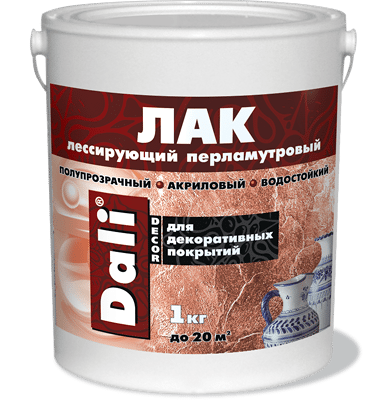 |
Nail the walls. |
| Coating pearl / metallic. |
When purchasing must take into account that the "Venetian" is among the most expensive finishing materials. The price ranges from 1.5 to 5-7 thousand. rub. for capacity 5 kg plaster mixture. When this flow rate is from 0.5 to 1.2 kg per square meter of finished surface, because only the costs for this group of materials are rather big.
And when you consider that the wall must be primed to align and plastering - to decorate, then the amount can be easily multiplied by at least two.

The layer thickness depends on the material flow directly. Also, it affects the number of stacked layers
Tools for wall decoration

Tools for rough surface leveling walls
To prepare the surface, and we need to apply the Venetian plaster:
- Drill beater-mixer (for mixing and application solutions caramel).
- Containers for plaster (plastic bucket 10-15 liters).
- Beaker for callers, additives and other components.
- Brushes and rollers for surface primer.
- Spatulas for application of plaster mixture (broad - for leveling and paving composition, narrow - for decoration).

Spatula and trowel for applying decorative plaster formulations
- Metal plastering trowel.
- Sanding with abrasive grater reticulum (№ 100, 120, 200 and 220).
- Masking tape.
- Measuring instruments.
With regard to the equipment of the master, there is need to take into account the non-toxicity formulations used. Because for the work, you can use an ordinary painter overalls (always with a headdress). For the "dirty" stages advisable to wear gloves, and at the base of polishing - safety glasses and a dust mask.
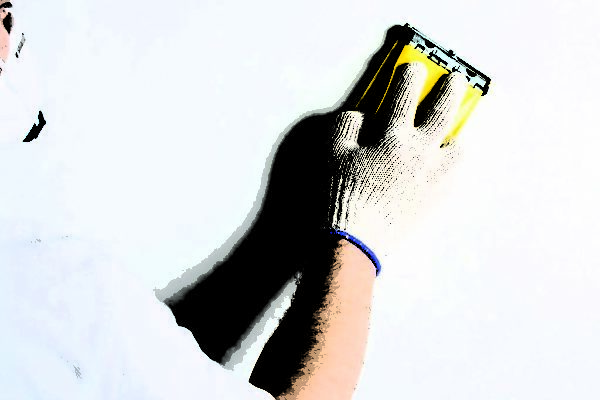
When grouting plaster sure to use a dust mask
Method plastering
Step 1. Rough alignment surface
Now we look at how to fit Venetian plaster with your hands. Decorative compositions of this type are very demanding on the basis of quality, because the wall should be durable, dry and flat.
Preparation of surfaces can include a variety of operations - it all depends on the initial state of the wall. As an example, surface leveling technique gypsum composition beacons:
| Illustration | alignment stage |
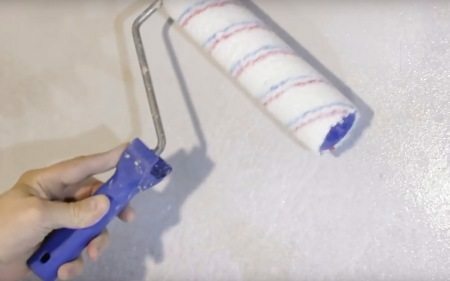 |
Priming the wall. Clean the surface of the wall of the old finish and stucco, hammer bring down large influxes of concrete. After this process the wall of the penetrating primer, applying it with a brush or roller in two layers. |
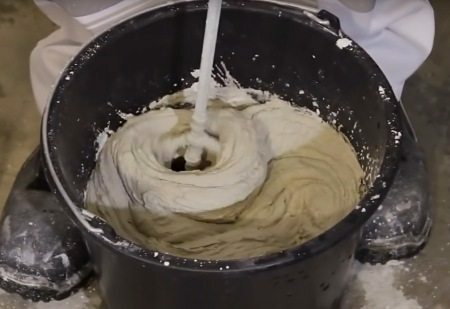 |
Preparation of plaster. In a container of clean water pour dry plaster composition. Using a drill with a nozzle-mix, knead the solution, achieving uniformity. We stand a composition of about 10 minutes, and then re-perform stirring to completely remove lumps. |
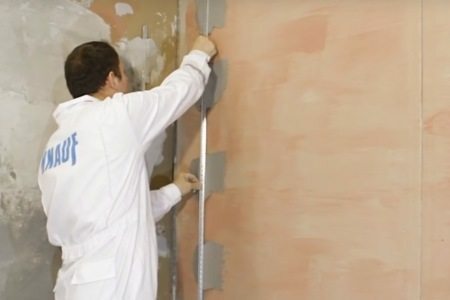 |
Installing beacons. Focusing on the level and plumb, attached to the wall, the beacon profiles. To fix the slides use solution. |
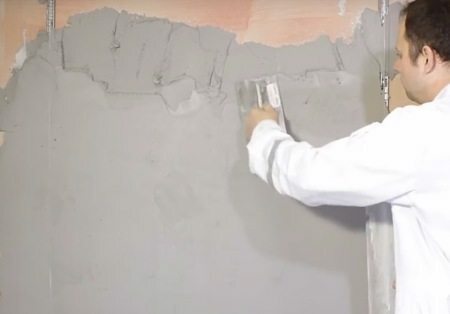 |
Leveling on beacons. The space between the beacon's apply plaster. Leveling surface rule, and then smoothing the wall with a spatula and rub clean with a damp sponge. |
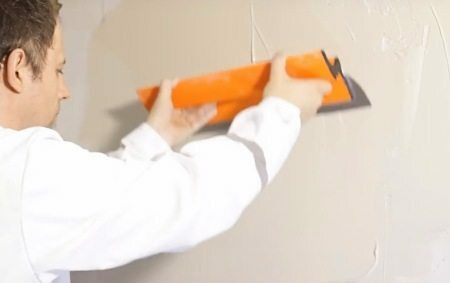 |
Laying topcoat. Cooking finishing leveling compound. On the planarized surface is applied a thin layer of material, and uniformly distributing it zaglazhivaya wide spatula. Thoroughly dry the finish plaster / plaster. |
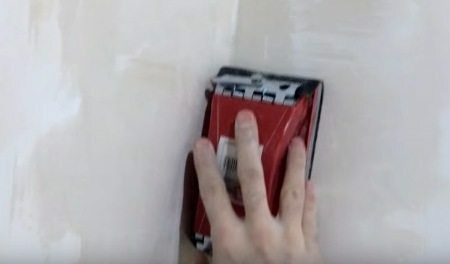 |
Grinding. Using a grater or electric grinder, the treated surface to remove any irregularities. Perfectly smooth base we do not need, but the more carefully we Difficult surface, the easier it will be to apply the Venetian structure. |
If you prepare the surface of this algorithm, and then thoroughly dry the base, the Venetian walls will keep the most durable. In addition, the bumps will not appear under the decorative layer.
Step 2. Application of the composition of the Venetian

To achieve this effect allows to use a special finishing techniques
We now consider the technology of applying decorative plaster mixture. As an example, using the classic technique, allowing to simulate matte polished marble:
| Illustration | a step of applying |
 |
base primer. Before applying plaster We handle base wall penetrating primer or a special compound, which increases the grip aligned with putty. As a general rule, apply white primer - so the base is obtained as neutral as possible and emerges under the thin decorative layers. |
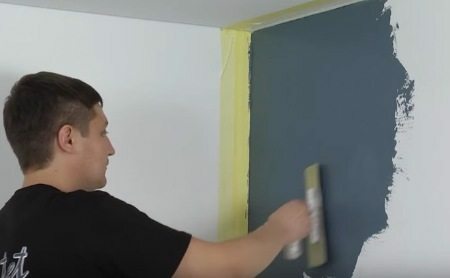 |
Stacking base layer. After drying the primer (it takes 4-6 hours depending on the formulation type) proceed to laying of the first layer Venetian stucco. For this purpose we use a mixture zakolerovannuyu the base hue. Plaster recruit spatula and placed on a grater. Float distribute the material evenly over the wall no more than 1.5 mm thick. Carefully smoothing trowel surface flat portion. |
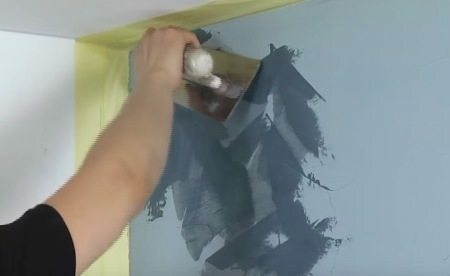 |
Laying the second layer. Before application of the second, the decorative layer, the foundation must be dried. It takes about 6 hours - approximately the time passes the primary polymerization and the material is no longer stick to the instrument. A second layer with a composition of the same color plot the chaotic strokes in different directions. When this base smear should be about 0.5 mm, and a thickness at the point should be reduced to 0.1-0.2 mm. As a result, part of the coating turns translucent. |
 |
Application of the contrast layer. Part plaster mixture tinting or in a different shade of the base color, if any, in a contrasting color. Then small portions of material is applied to the dried surface, forming a decorative covering. The small thickness of the layer allows us to see the base color, exude a contrasting decor. |
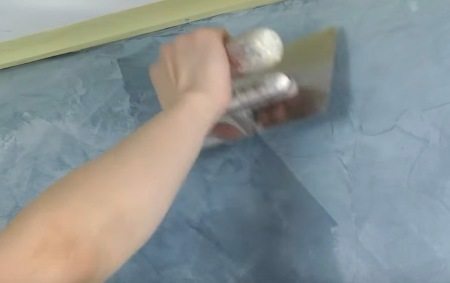 |
Smoothing plaster. Grater plaster thoroughly wash and wipe dry. Thereafter, the corner or flat surface portion smoothed plaster. If necessary, carefully remove irregularities pulling tool plane excess material. It is doing so desired, after polymerization, but prior to complete drying of the composition. |
As is the case with plastering, methods of applying the decorative structure may be very different. But the principle of stacking thin translucent layers in different directions remains unchanged - it is thanks to this method of Venetian plaster takes on its own unique view
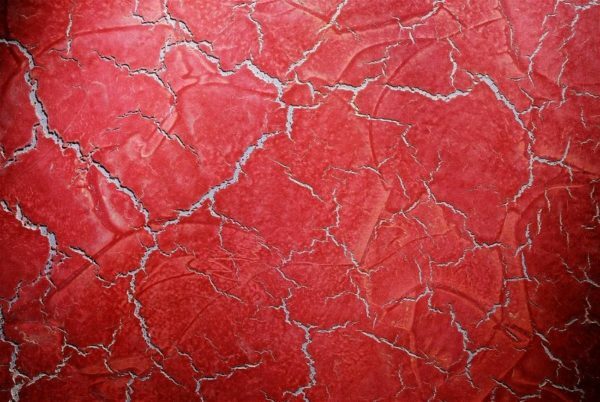
Craquelure - one method of applying contrasting layers of plaster
Step 3. Decoration and protection of plastered walls
To seize exterior decorative coatings, as well as to protect the substrate from moisture, abrasion and ultraviolet plaster can be further processed.
Methods protective and decorative treatment:
| Illustration | decoration technology |
 |
Waxing. The most popular compositions for the treatment of Venetian plaster - a variety of waxes. Depending on the consistency of wax different technology of its application:
|
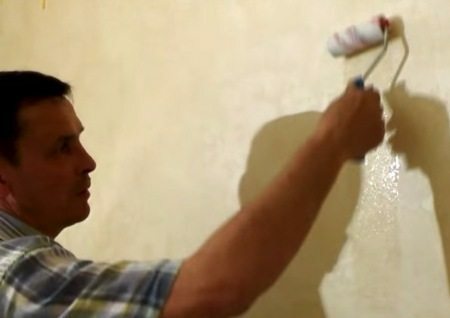 |
Varnished. When decorating the premises with high humidity, moisture resistance Venetian own composition may not be enough. In this case, the application will help on the rendered surface akvalaka. Acrylic compounds are most commonly used - matte and glossy. An additional plus varnish - protection against abrasion. So this method can be applied not only in the bathroom, but also in the corridors. |
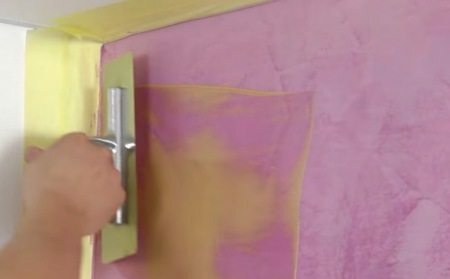 |
metallics painting. Venetian stucco usually colored in the mass. Therefore, after the polymerization of only tinted or treated metallics. Metallic may be added either in the varnish or a waxy paste. In the first case, the processing is done with a brush, in the second - a trowel. To protect the metallic layer is often applied over a transparent lacquer or wax. |
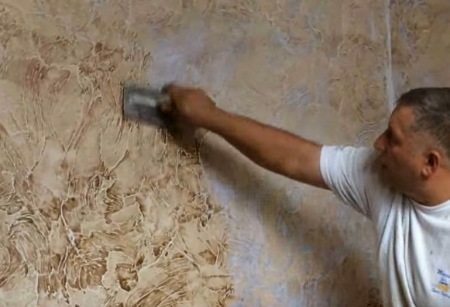 |
The application of the pearlescent formulation. Nacre as well as metallic, may be added to the various formulations for decoration. Pearl coating is applied a thin layer, giving a surface gloss characteristic and stressing the sandwich structure depth. |
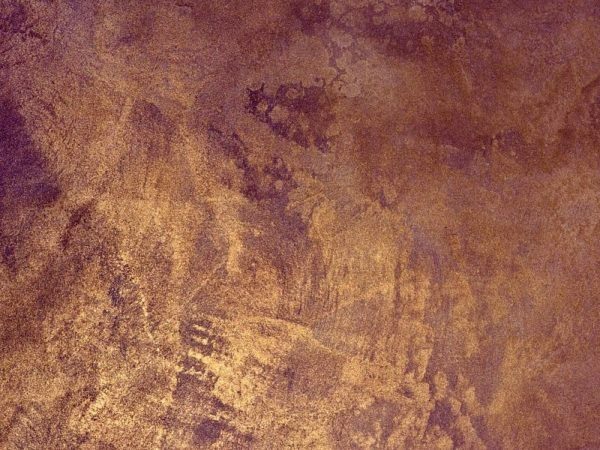
Plastered surface after toning and polishing metallic
conclusion
We can not say that the Venetian plaster is quite simple. But nothing is impossible in this method of decoration, too, no: it is enough to study the application of the technique (this will help you tips and video in this article), and a little practice. In addition, the advice you can always refer to the comments!


